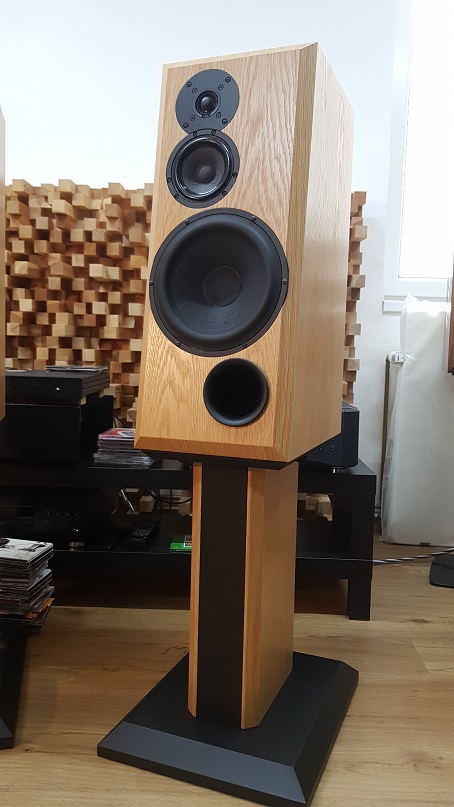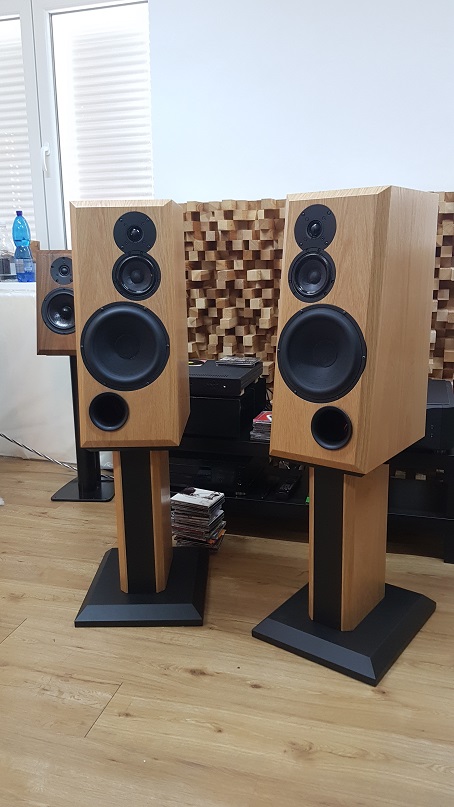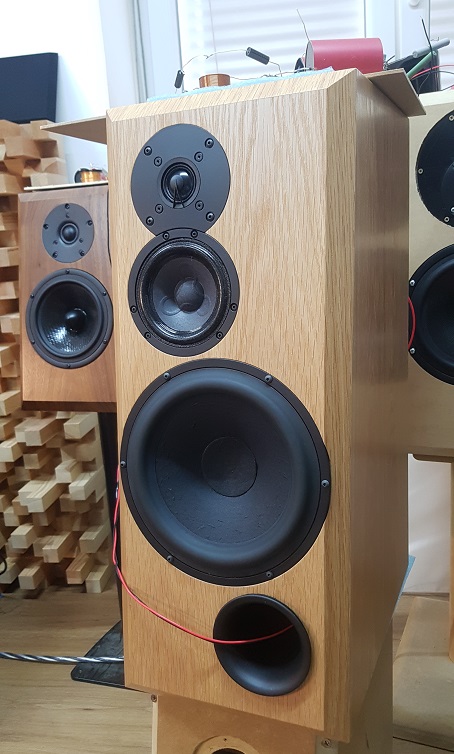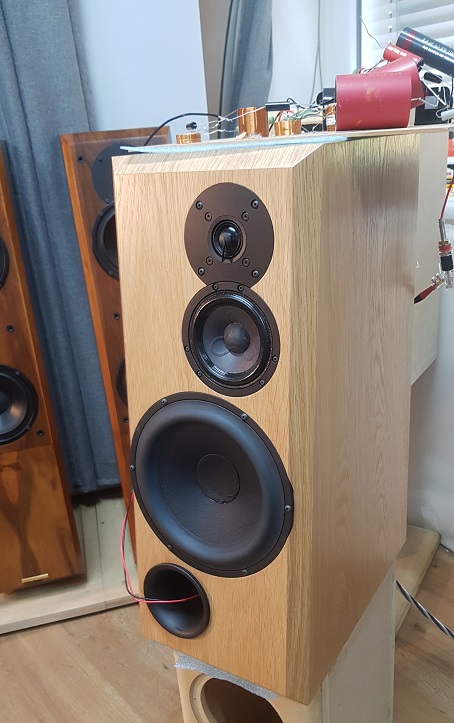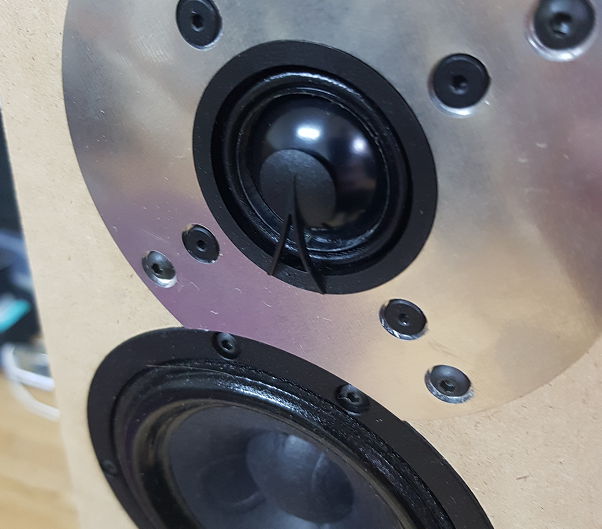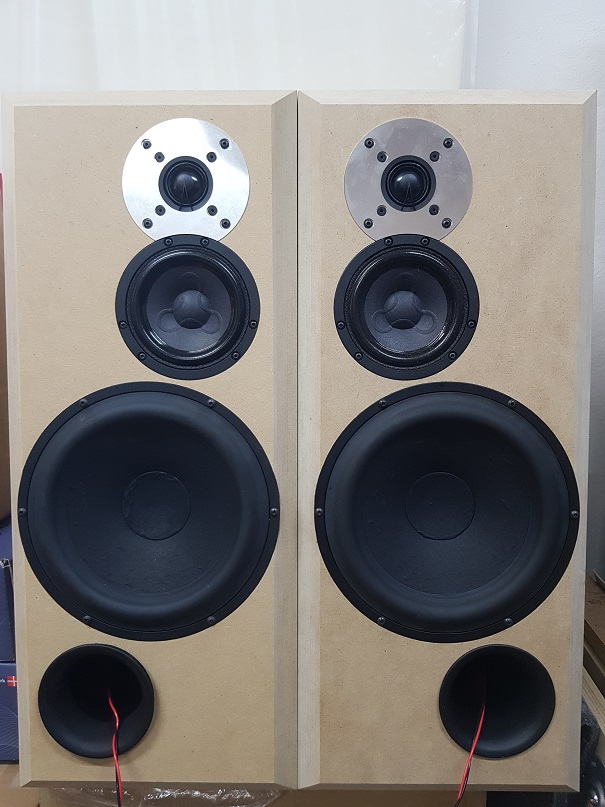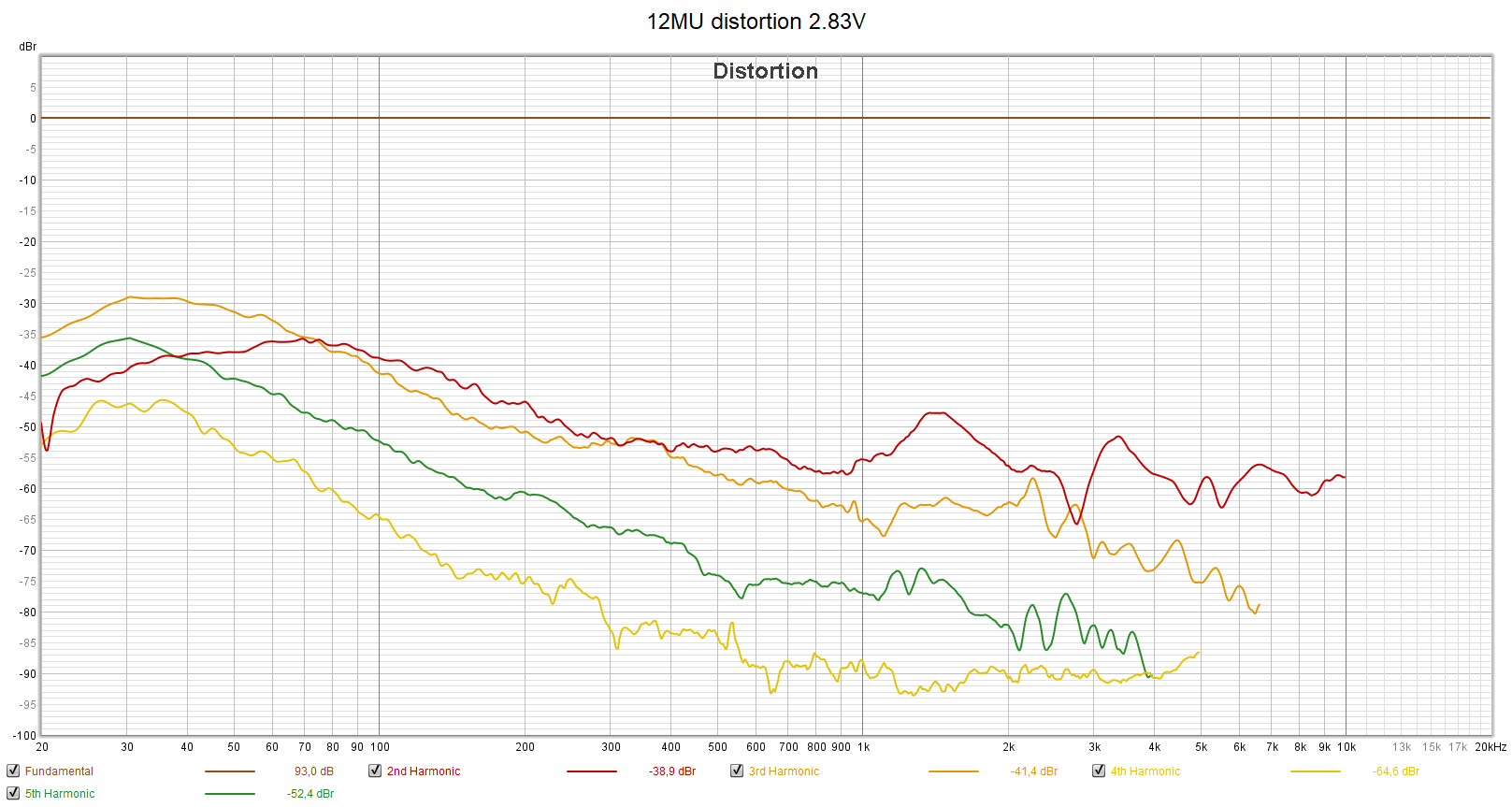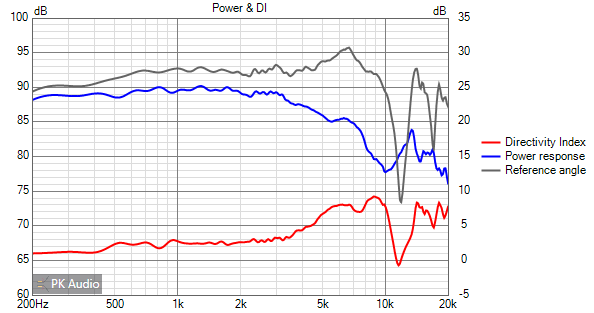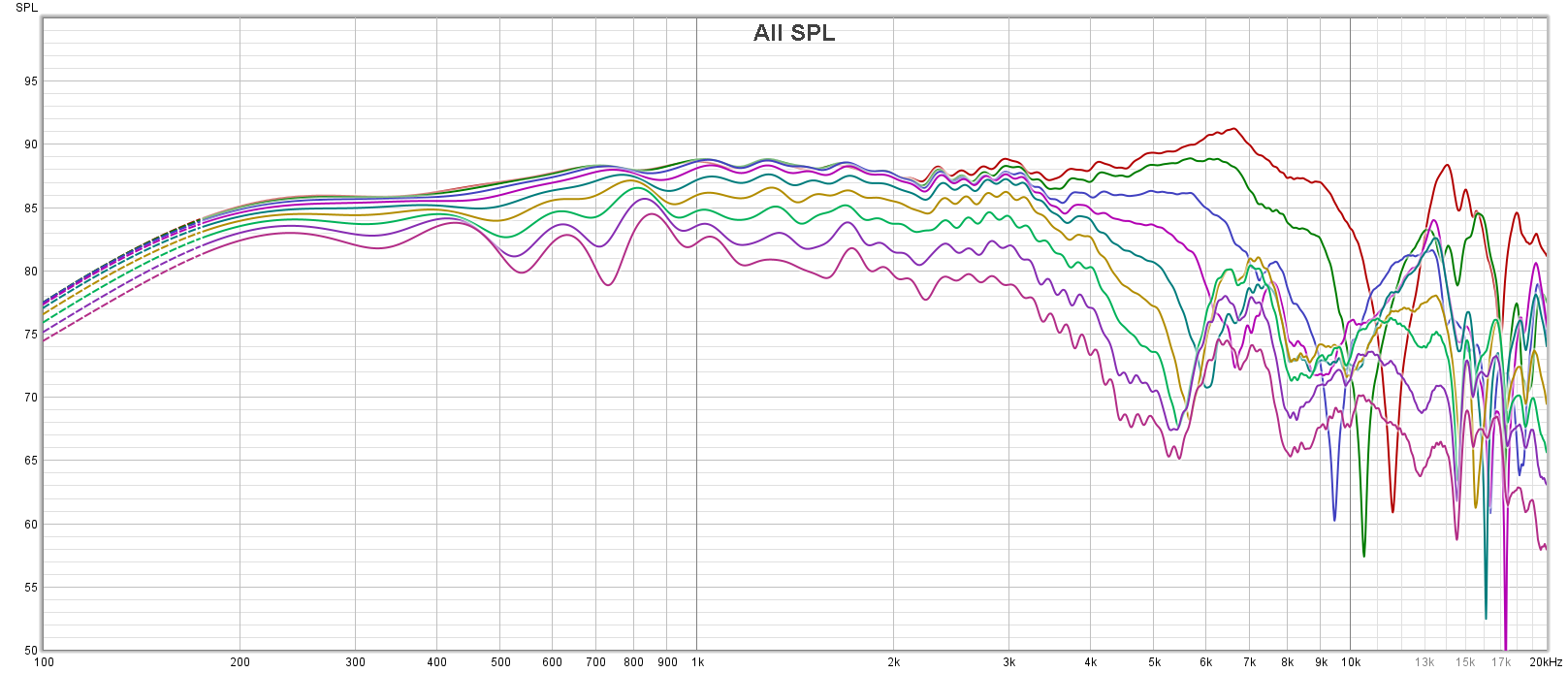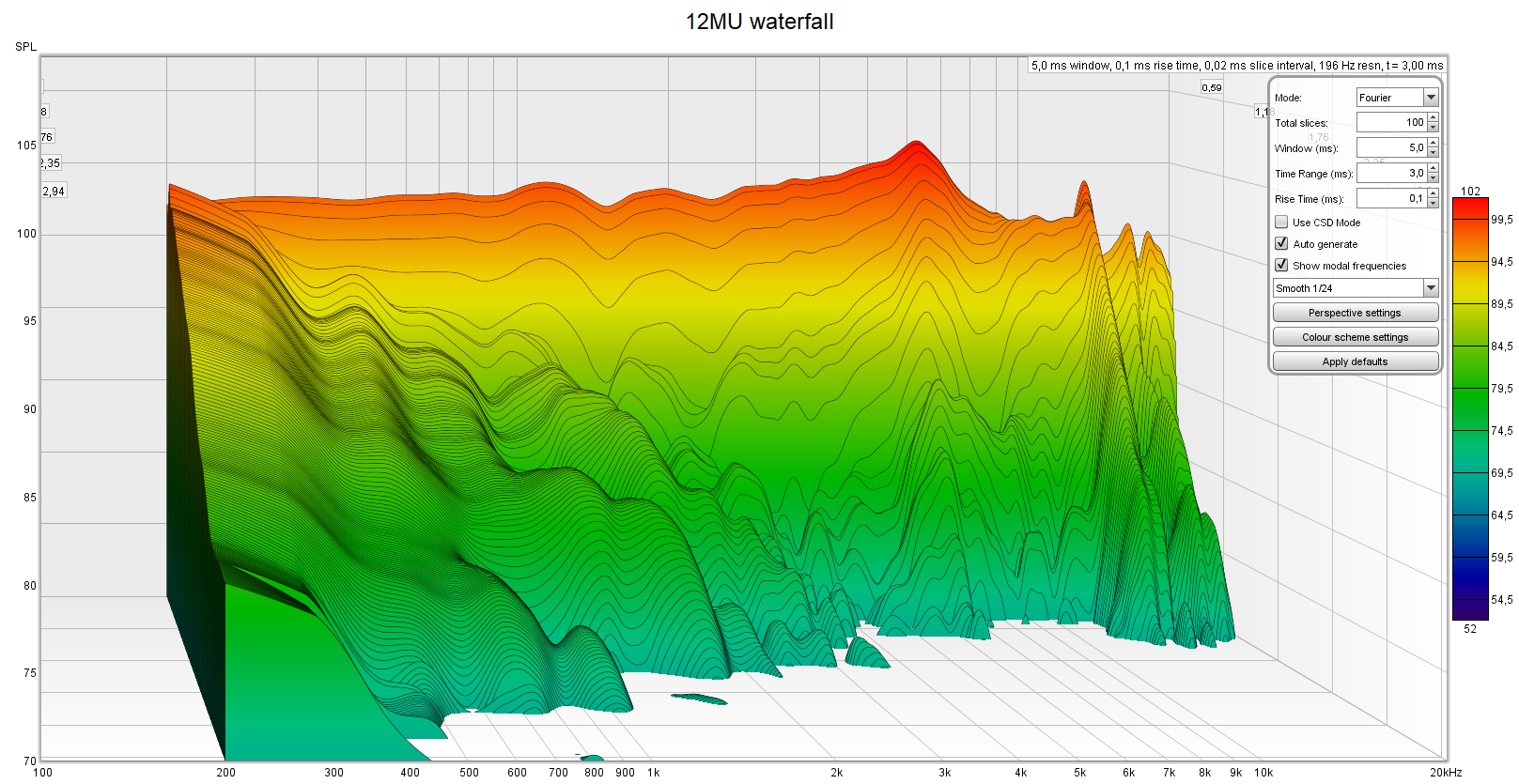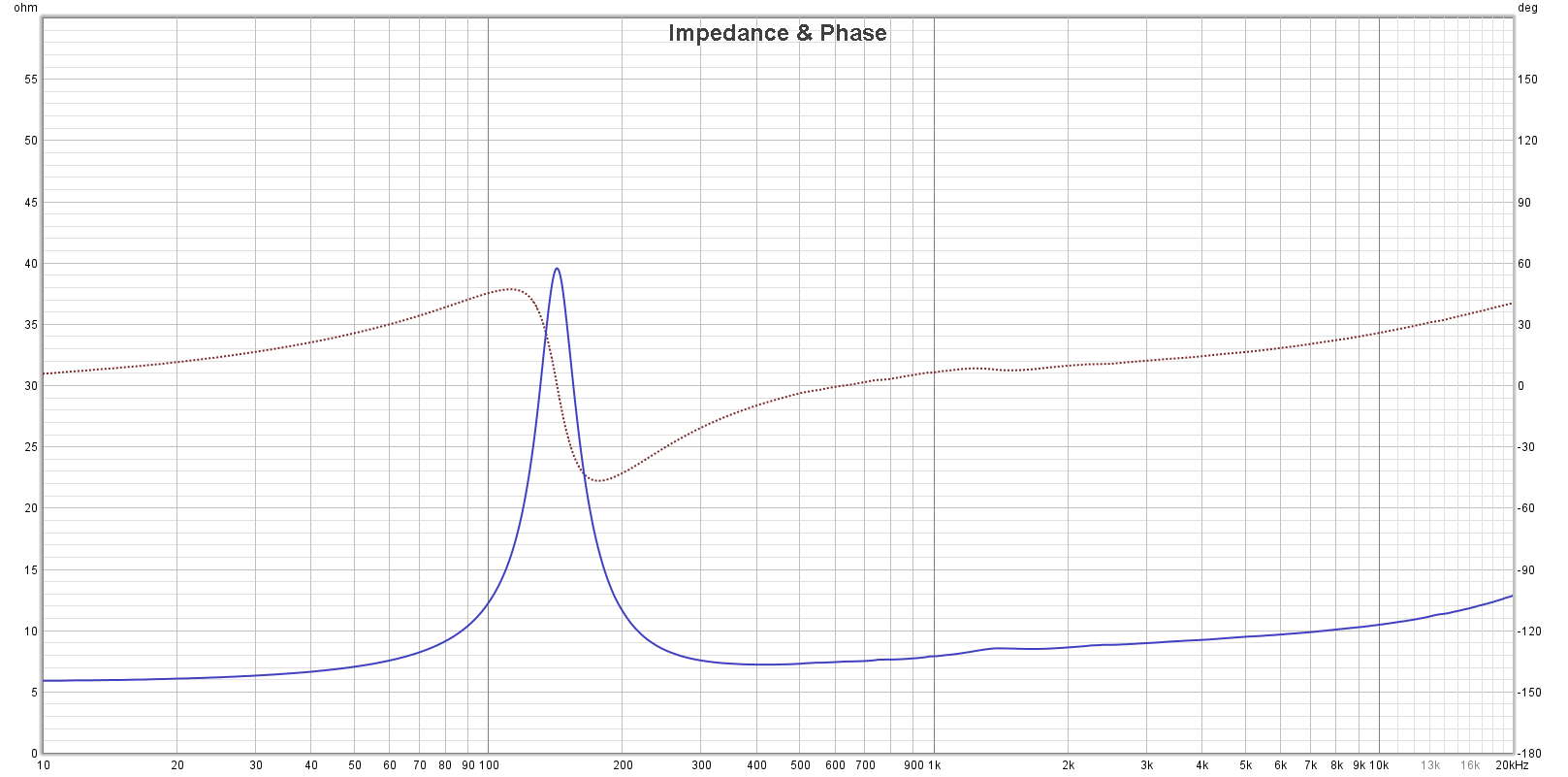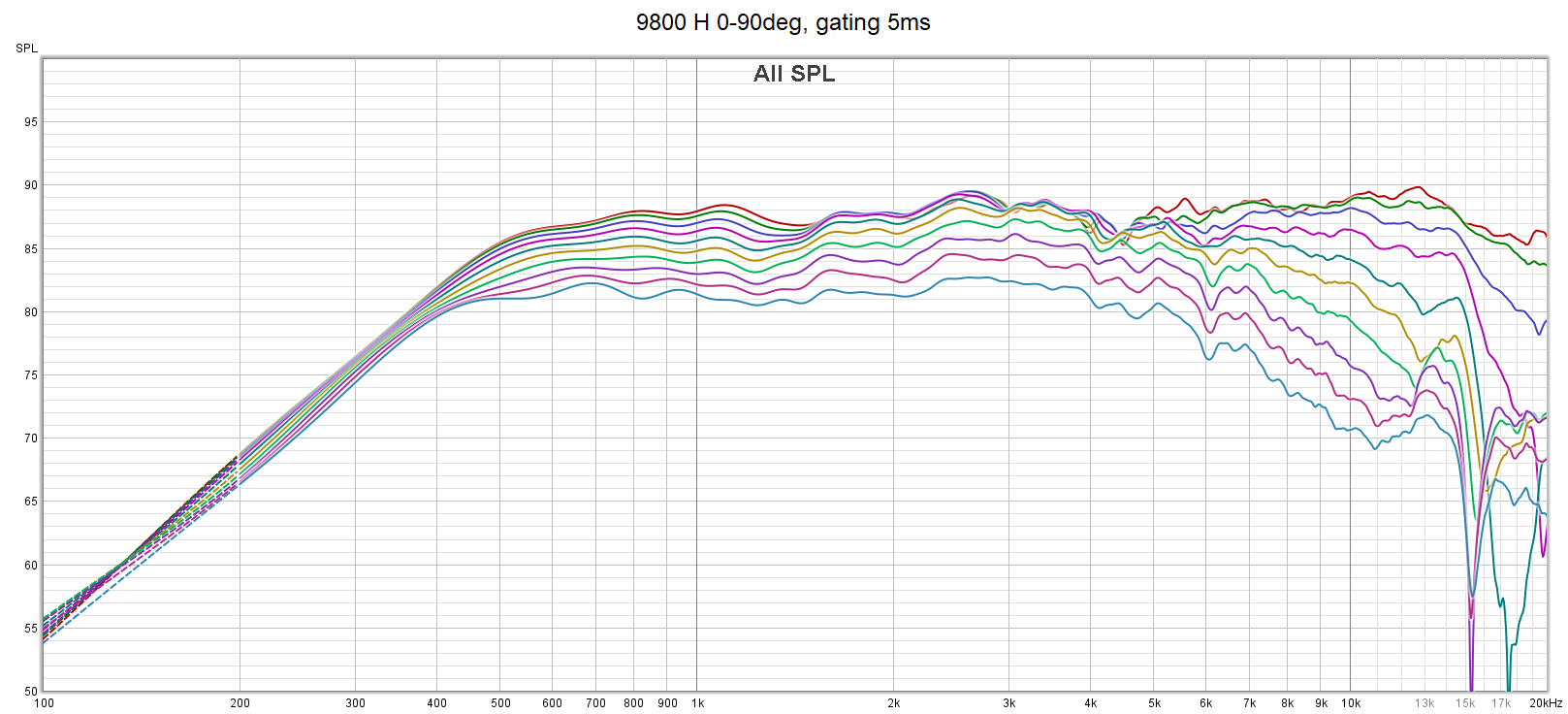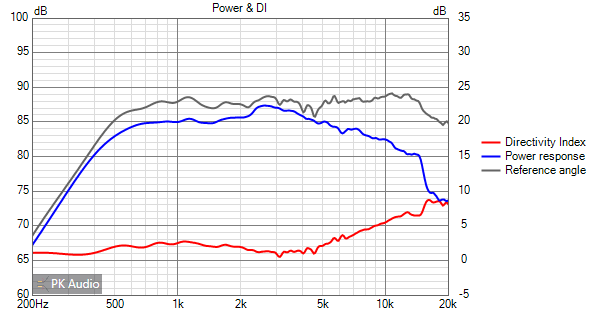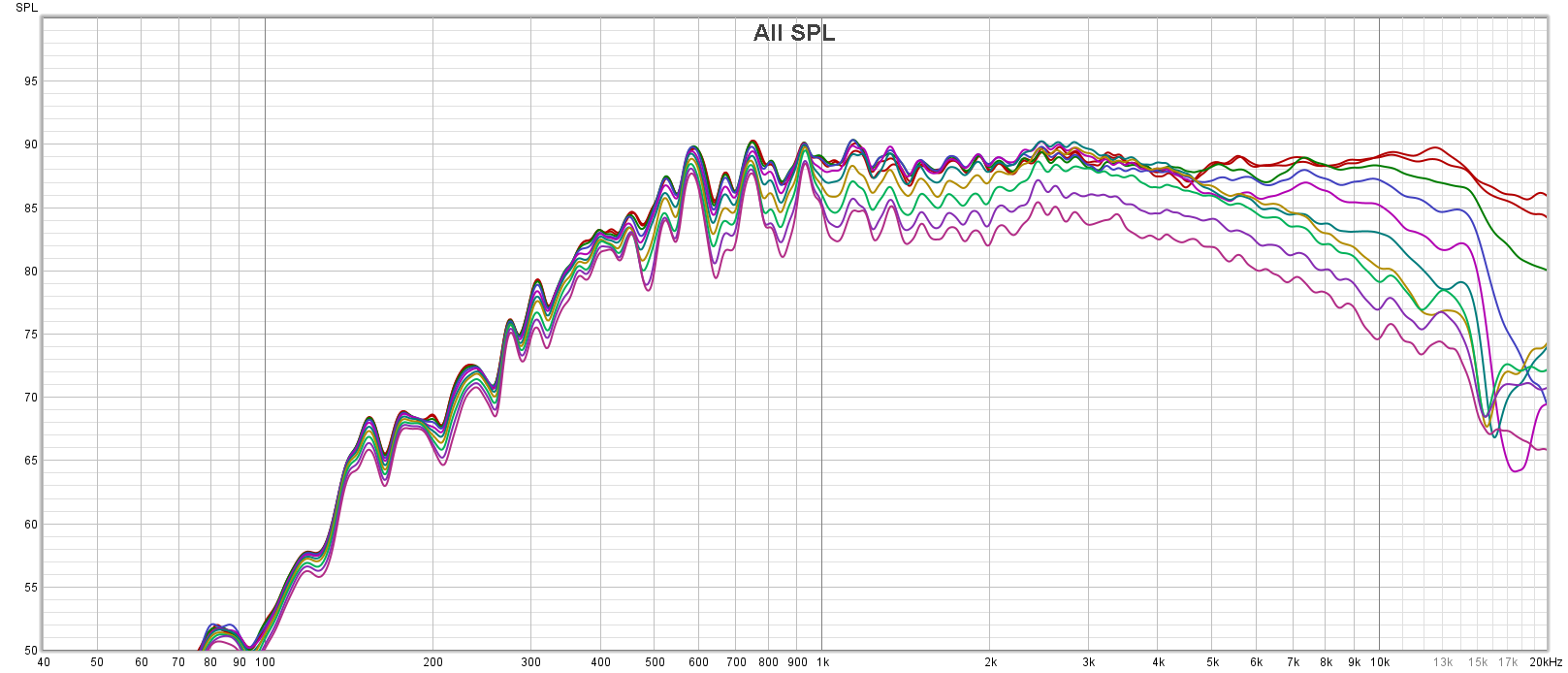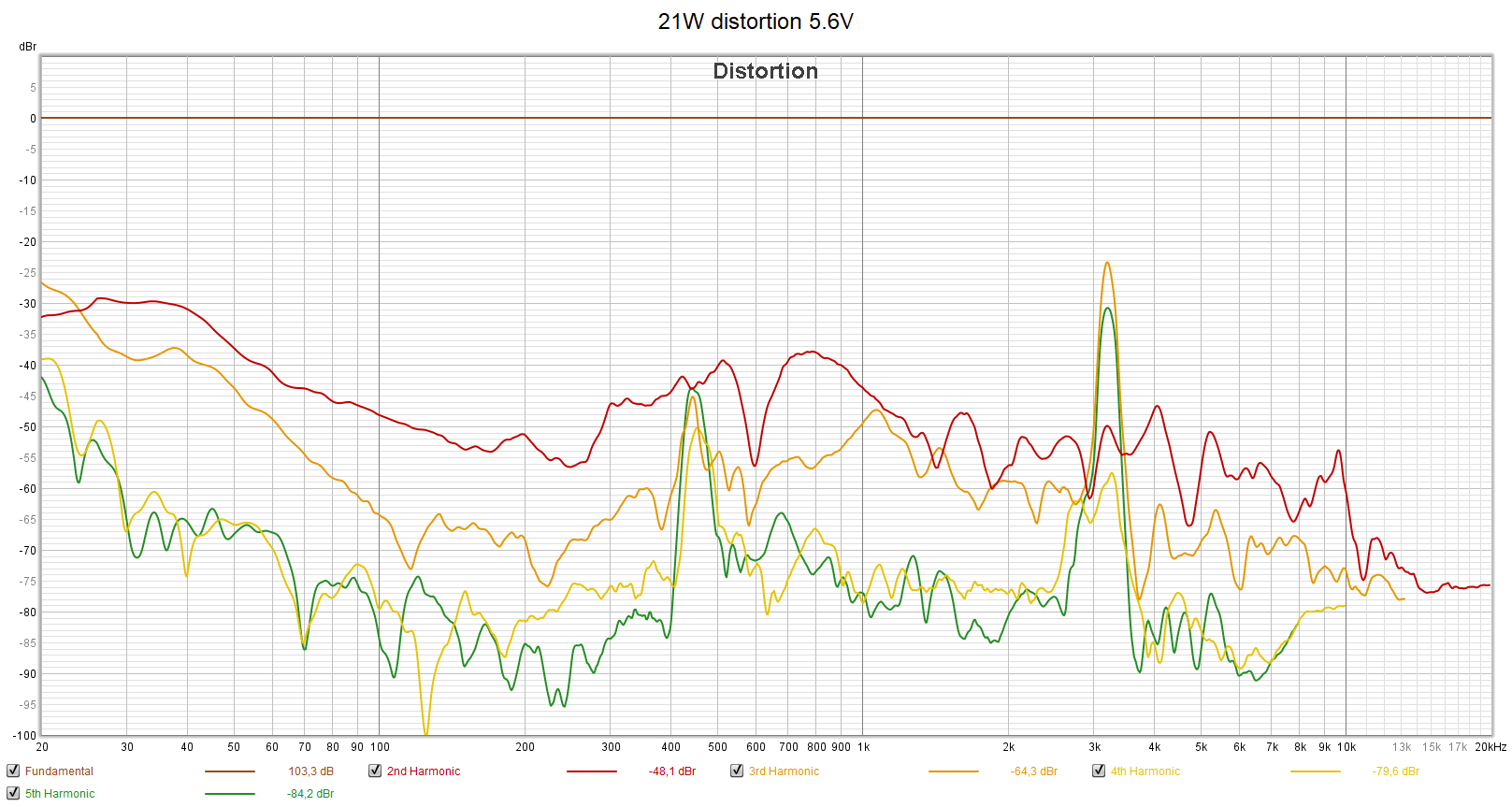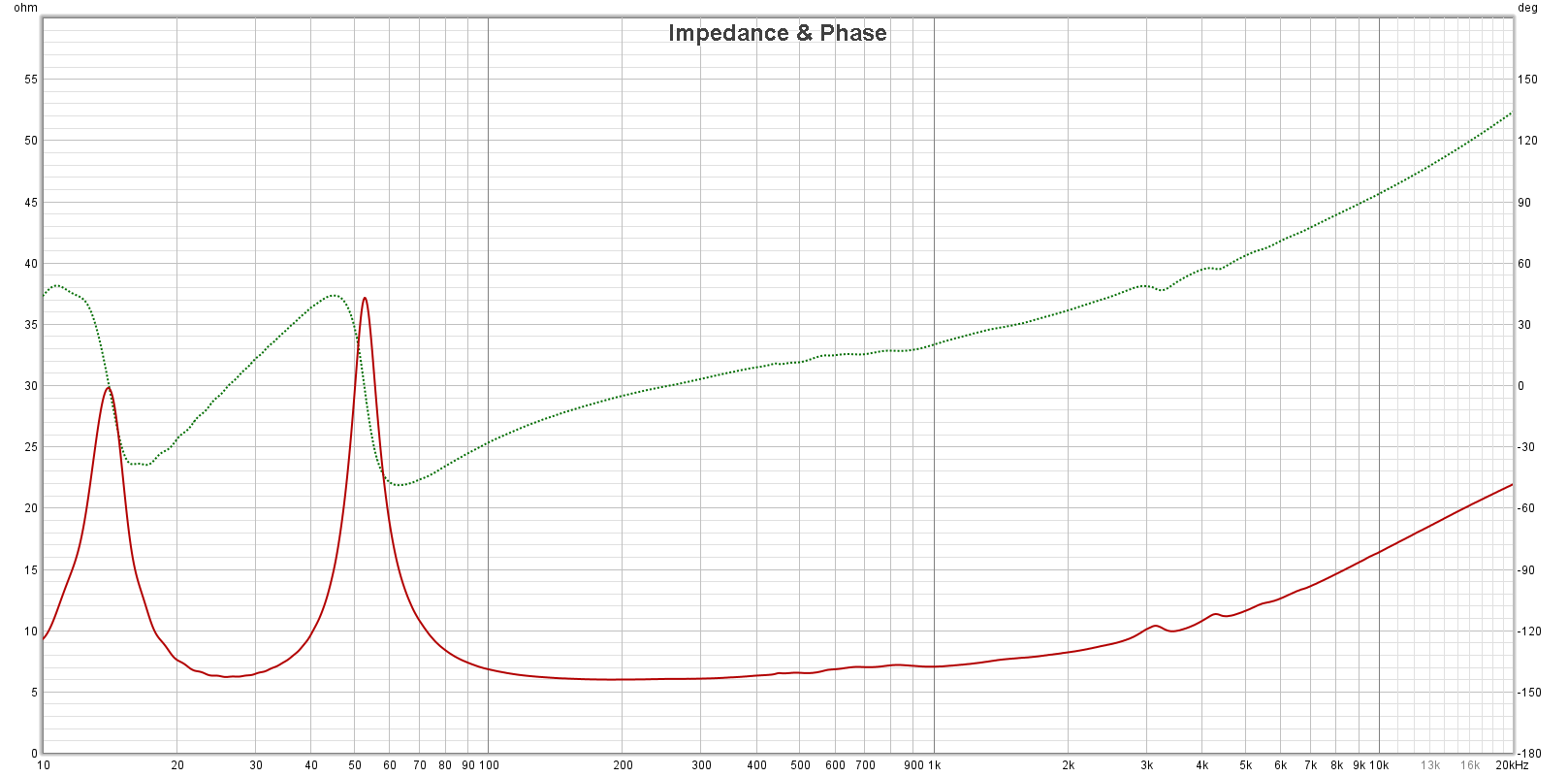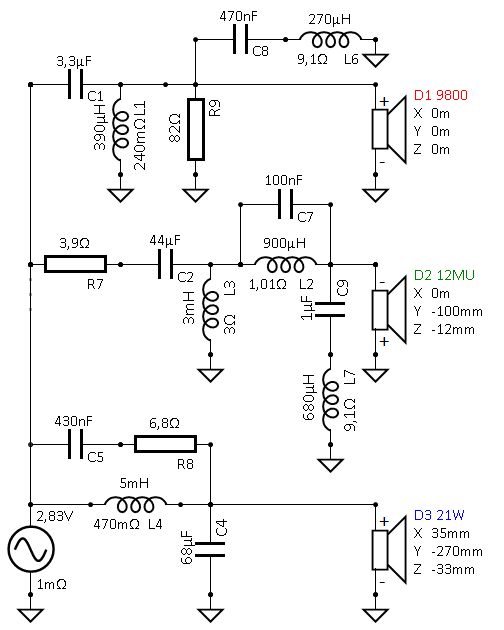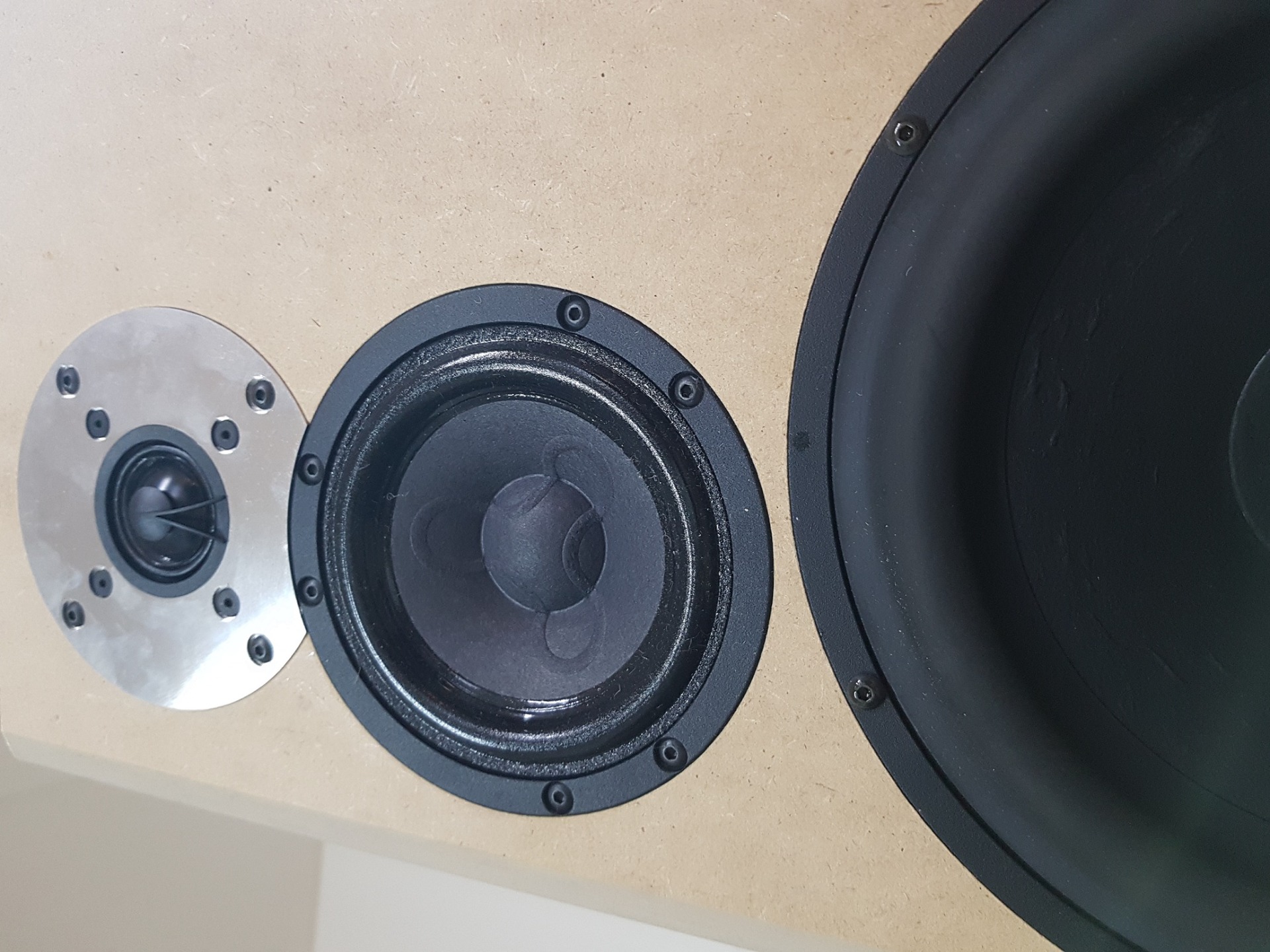
3Way 21W 12MU 9800
Larger 3way standmount 8"+4"+1"
Drivers: Scan Speak Classic 21W/8555-10, Illuminator 12MU/8731, Classic D2904/9800
Concept: 3way, standmount, bassreflex
Sensitivity: ~85-86dB/2.83V/1m
Crossover: W-M 400Hz and M-T 3200Hz, 2nd order LR
Impedance: 6ohm nominal, 4.6ohm at 100Hz and 3.0ohm at 16kHz are two minimums
Project status:
Listening tests in progress...., I will repeat all measurements after veneering, when tweeter faceplate is fully recessed and aligned with the front baffle, as currently it sticks out ~1mm and causes small irregularities around 5-7kHz.
12MU is my favorite midrange, it has open, natural sound, and the level of detail and tranparency leaves the majority of other drivers behind, yet the sound is not fatique. I bet the foam surround does its job well, so for future projects I will strongly consider using Scan Speak 18M midrange.
The 8" woofer choice was not easy, the drivers have to complement each other also visually. I had 21V around, and when I put the drivers close to each other, I found out it looked good as a whole.
9800 tweeter got to my hands from the hifi friend with the full recommendation, and after the discussion we came to the conclusion 12MU would be perfect match.
The sound description
Drivers measurements
Hmm hmm not even bit I would complaint about in those measurements. I am always a little bit nervous and excited taking the very first measurements, you never know, will everything be according to expectations, will drivers perform well, will there be no bad surprises?
Here for 12MU and 9800 we can see excellent on-axis and off-axis performance, FR linearity between 500-3000Hz is exemplary. I spent some time modelling the diffractions for various 12MU placements on the baffle, and it really paid off, and this was for the first time I see 12MU measure that perfect and flat in the real baffle. The same goes for 9800, it just shows narrow directivity and mild diffration signature, basically inevitable when the tweeter is placed in standard rectangular baffle. LR2 crossover is good choince to blend directivity of smaller midrange with the broad radiation of the tweeter.
This time I measured distortion with mic distance and voltages 2.83V and 5.6V. I wanted to be sure if 9800 tweeter can be crossed over with shallow LR2 slope. Preliminary target was 3000Hz LR2. From 9800 distortion results for 5.6V and for frequencies below 2000Hz the shallow crossover slope will not be an issue, though this will have to be yet confirmed by listening tests.
9800 is quite well known drivers but hardly seen in any projects. The distorsion, FRs, the fact that it is Scan Speak....all saying this tweeter could sound excellent, somewhere between silk dome and the best of hard domes.
All drivers have HD2 -50dB down, though general consensus is that higher levels of HD2 are ok, I am glad all drivers perform equally well in that regard so basic sonic characteristics of the drivers could be the same. HD3 is ~-60dB for all drivers in their intended passbands.
There is an issue with the front firing port, I will work on it to mitigate its main resonance at 500Hz.
All measurements were done with SPL calibration so all graphs show real sensitivities for 2,83V.
As the placement of the tweeter and midrange on the baffle is not horizontally centered, the directions for H+ and H- are as following:

12MU/8731 midrange measurements
9800 tweeter measurements
Measurements were taken in the cabinet without veneer, so tweeter faceplate protrudes ~1mm creating the lip at 104mm diameter. This might have negatively affect the measurement, nothing serious, but I will repeat the measurements with the final cabinet and I expect slightly more linear response mainly around 4-5kHz.
21W woofer measurements
Bass Alignment / Cabinet volume
Most of Scan Speak woofers measure higher Fs and Qs compared to datasheet. Often different measured TS does not neccessarily lead to totally different cabinet volume or port tuning. It is also the case of the woofer here, and 33l with port tuning ~31Hz look good in the simulation. 40l would be ideal, but here I wanted the cabinet as small as possible. From 21W 2way (37l, 21W without additional magnet) I know 21W is capable of strong bass and low end extension, so I do not expect 33l would be significant undesired change.
I tried to install additional magnet (magnet repels and when it gets <~1cm close they attract) with diameter 120mm, inner diamer 60mm and height 15mm. It brought mild change of Qs, both Qes and Qts lowered.

Crossover modelling
Symetric LR2 was possible thank to tilted baffle. Drivers responses and distortion measurements confirmed the drivers are "LR2 friendly" and I have very good experience with this topology when it comes to the sound. Phase tracking is excellent, reversed polarity of the midrange creates nice deep dips at both crossover frequencies.
Treble level was needed to lower. From previous projects I have good experience with using RC in parallel to the tweeter, but this time it did not work well. Looking at the bump at 10kHz which needed to be compensated, it reminded me BW802D2 upgrade, where tweeter shown similar FR shape. So I tried RLC (C8 and L6) and it worked well, linearising whole range above 5kHz.
21W breakup at 3,2kHz is suppressed >40dB below system FR by C5+R8 in parallel to main woofer coil L4.
C7 in parallel to L2 helps to linearize the response around 7kHz, creating smooth 2nd order rolloff.
Power response has nice declining trend, DI curve has mild 1dB "S" curve, basicaly this is as good as it gets with 4"+1" drivers without WG. From Illu3, and other not published project 18WU+12MU+T25B, I know this topology and spinorama work very well and sounds good. This time I also try to omit RLC for woofer crossover, suppressing 100Hz bump. Instead, I will try to use it to increase overall system sensitivity, which will be ~87dB/2.82V/1m.
2-5kHz is slightly pushed down, by ~1dB, to compensate for slightly broader directivity. This is generally well known solution for various 6"-1" 2way where directivities of midrange and tweeter at crossover frequency do not match. It proved to be beneficial also in this case, confirmed by listening tests.
Looking at the off axis responses it reminds me the behavior of the loudspeakers with the waveguides. It is clear, that it is possible do create well good spinorama graphs even without WG. LR2 filters are very suitable in that regard, blending the not matching directivities of the midrange and tweeters. Of course, as always, midrange and tweeter must measure well nad have minimized diffractions. When this all is well prepared and set, things fit nicely together, resulting in nice set of the graphs and most importantly the excellent sound.
Following image shows DIs of midrange and tweeter individually, total DI of the speaker with the crossover when only Horizontal responses are factored in, and total DI of the speaker with the crossover when Horizontal and also Vertical responses are factored in. General consensus says DIs of both should match at crossover frequency, ideally. Well, yes.... but here we have tilted front baffle, well behaved drivers with extended responses below and above Fc, and there are no sudden directivity changes around Fc of both midrange and tweeter.
This is the case where crossover topologies with shallow slopes come into play and offer good solution. Considering crossover frequency ~3kHz, LR2 crossover helps to blend these two different directivity sources.
Photos
